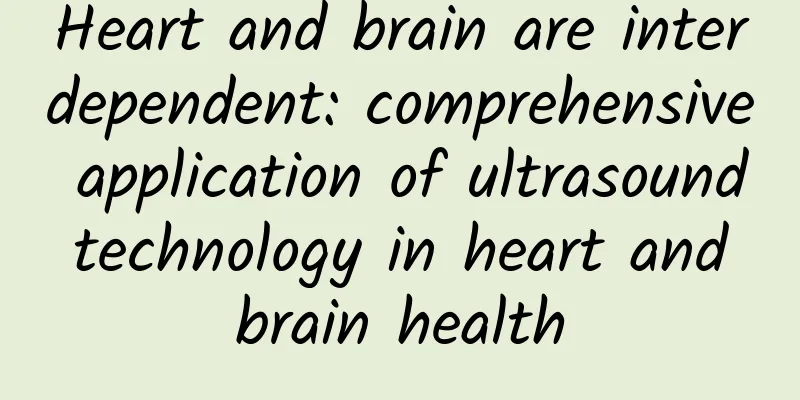I take a walk after three meals a day, but my heart vessels are still blocked. What's going on?

|
I take a walk after three meals a day, but my heart vessels are still blocked. What's going on? This case is from a patient's self-report after coronary artery bypass grafting in the cardiac surgery ward: I have diabetes, high blood pressure, and high blood lipids for several years. I insist on taking a 30-minute walk after three meals every day, have a light diet, a regular work and rest schedule, and control my weight within a reasonable range. I do not smoke or drink alcohol. I have not had regular physical examinations in the past few years since retirement, and I have not monitored my blood sugar. My blood pressure is still normal when I occasionally monitor it, but my heart vessels are still blocked. Based on the patient's description, the responsible nurse made the following analysis: I take a walk after three meals a day, but my heart vessels are still blocked. What's going on? This case is from a patient's self-report after coronary artery bypass grafting in the cardiac surgery ward: I have diabetes, high blood pressure, and high blood lipids for several years. I insist on taking a 30-minute walk after three meals every day, have a light diet, a regular work and rest schedule, and control my weight within a reasonable range. I do not smoke or drink alcohol. I have not had regular physical examinations in the past few years since retirement, and I have not monitored my blood sugar. My blood pressure is still normal when I occasionally monitor it, but my heart vessels are still blocked. Based on the patient's description, the responsible nurse made the following analysis: sports? I persisted. Why are my blood vessels still blocked even though I keep exercising? According to the patients' self-reports, the following four points are summarized: 1. Failure to have regular physical examinations; 2. Diabetic patients should monitor blood sugar changes every day; 3. Pure exercise cannot replace drug treatment. 4. Chronic disease patients should adopt exercise plans under the guidance of cardiac rehabilitation doctors; conduct regular health assessments and formulate reasonable and effective exercise prescriptions based on their own conditions. Only by regularly monitoring their own health status can they protect themselves and avoid the invisible killers created by the three highs. First, let's understand the benefits of walking: proper walking after meals can improve intestinal function, consume some energy, avoid post-meal blood sugar rise, and properly control weight. It can also increase cardiopulmonary function, enhance vascular elasticity, and reduce the risk of arterial blockage and hardening. It can make the heart stronger and prevent the occurrence of chronic diseases such as hyperlipidemia, diabetes, and hypertension, which is extremely beneficial to physical health. For the sake of our physical health and to protect each organ, start moving from now on. Next, let’s talk about whether the three highs can be restored to normal through exercise? The three highs refer to high blood pressure, high blood sugar and high blood lipids. Exercise can have a positive effect on people with the three highs, but it cannot completely restore them to normal. Regular monitoring of the three high levels and a combination of exercise and treatment can give you peace of mind. Pure exercise without regular physical examinations will eventually invade your blood vessels. Studies have found that moderate aerobic exercise, such as brisk walking, jogging, swimming, etc., for at least 150 minutes per week, can help lower blood pressure and reduce the incidence of cardiovascular disease. This is because during exercise, it not only expands the heart and lungs, but also the blood vessels[1]. When the blood pressure of hypertensive patients fluctuates unstably, they should consult a doctor before exercising to determine the exercise method. It is not advisable to do strenuous exercise, because strenuous exercise can easily cause a rapid increase in blood pressure, leading to the occurrence of cardiovascular and cerebrovascular emergencies, such as cerebral hemorrhage, cerebral infarction, angina pectoris and other dangerous events. Exercise can help improve insulin sensitivity and promote glucose utilization, thereby helping to lower blood sugar levels. Although exercise is very important for controlling high blood sugar, patients with high blood sugar still need to combine diet control and drug treatment, and regularly monitor blood sugar changes. You can't think that you can give up blood sugar monitoring just because you exercise regularly and eat a reasonable diet every day. Exercise cannot cure diabetes. Exercise can also reduce LDL cholesterol and total cholesterol levels. Both anaerobic and aerobic exercise can improve blood lipid metabolism and help control blood lipids, but exercise cannot cure high blood lipids. In summary, moderate aerobic exercise and resistance training can improve high blood pressure, high blood sugar and high blood lipids, but they cannot cure them. Exercise needs to be combined with diet control and drug treatment to achieve the best results. Because exercise can thin the blood, it plays a certain role in preventing the occurrence of cardiovascular and cerebrovascular thrombotic diseases in middle-aged and elderly people. Exercise can significantly reduce the three blood lipids in the human body, thereby improving vasomotor function, helping the body to transport oxygen and nutrients to various tissues, and making the cardiovascular system more efficient. Exercise is a magic weapon for fitness and anti-aging, and it is also an effective way to protect the organs of the body. It is recommended that before starting to exercise, you can consult a cardiac rehabilitation doctor for advice and adopt an exercise prescription that is more suitable for you. How to achieve effective exercise? In order to exercise more scientifically and make exercise more effective, it is necessary to monitor changes in heart rate. When the human body reaches 60% to 80% of the maximum exercise heart rate range, it is considered to be the best cardiopulmonary endurance training range, which can help improve cardiopulmonary function. For people who want to lose fat, reaching the heart rate range can promote fat burning. The exercise heart rate can be set according to personal physical condition. For those who are just starting to exercise or have chronic diseases, the target heart rate should be set in a lower range, that is, 60%-70% of the maximum heart rate; for those who are healthy and exercise regularly, it can be set at 70%-80% of the maximum heart rate. How to monitor your heart rate during exercise? During exercise, you can wear an electronic watch with a heart rate detection function or manually measure your pulse to understand your heart rate. Manual pulse measurement method: Immediately after exercise, gently touch your pulse with your index and middle fingers, count the number of heartbeats within 15 seconds, and then multiply by 4 to get the number of heartbeats per minute. Electronic watch devices can monitor heart rate in real time, allowing you to more accurately grasp the intensity of exercise. Precautions for exercise: Scientific and effective exercise can improve the effect of exercise and protect our heart health. Although the target heart rate range is set in medicine, everyone's physical condition and health status are different. Before exercising, it is recommended to consult a cardiac rehabilitation doctor to understand the exercise intensity and heart rate range that are suitable for you, and to set up a healthy exercise prescription so that we can better care for our heart and protect our health. In addition, if you experience symptoms such as chest tightness, chest pain, and difficulty breathing during exercise, you should stop exercising immediately and seek medical attention in time. Author: Li Die Image source: From the Internet (if there is any infringement, please contact us to delete) |
<<: Don't lose weight randomly! These unreliable weight loss methods may damage your bones
Recommend
How many minutes does the liquid perfusion process take?
Fluid insufflation is usually used to check wheth...
Treatment of gynecological inflammation
Gynecological diseases have tortured many of our ...
What causes HPV59 positivity?
Gynecological inflammation has a great impact on ...
Be alert! A case of plague has been confirmed in a place in China, and the condition is critical!
Ningxia reported in the early morning: A case of ...
What are the prevention methods for mixed vaginitis?
Mixed vaginitis is a type of vaginitis. Few women...
How much pelvic fluid is normal?
Gynecological diseases have a great impact on man...
Beware! Can't walk after contracting H1N1? Doctors urgently warn that many people have been infected!
When children get the flu, parents are the most c...
Why do I feel backache after curettage?
Artificial abortion is a remedial measure after a...
What are the symptoms of vaginitis? The most obvious symptom is the increase of leucorrhea and itching.
Vaginitis is a common gynecological disease that ...
Vaginal hysterectomy steps
The uterus is a very important reproductive organ...
Down syndrome trisomy 21 critical risk
We all know that a full body check-up is a great ...
Parents must know! What should you do if your child is infected with the new coronavirus?
Children's health concerns every parent. How ...
What kind of football shoes should I choose? What should I pay attention to when buying football shoes?
When football players gather together to play foo...
My appetite suddenly increased. Am I pregnant?
There will be some different changes in the body ...









